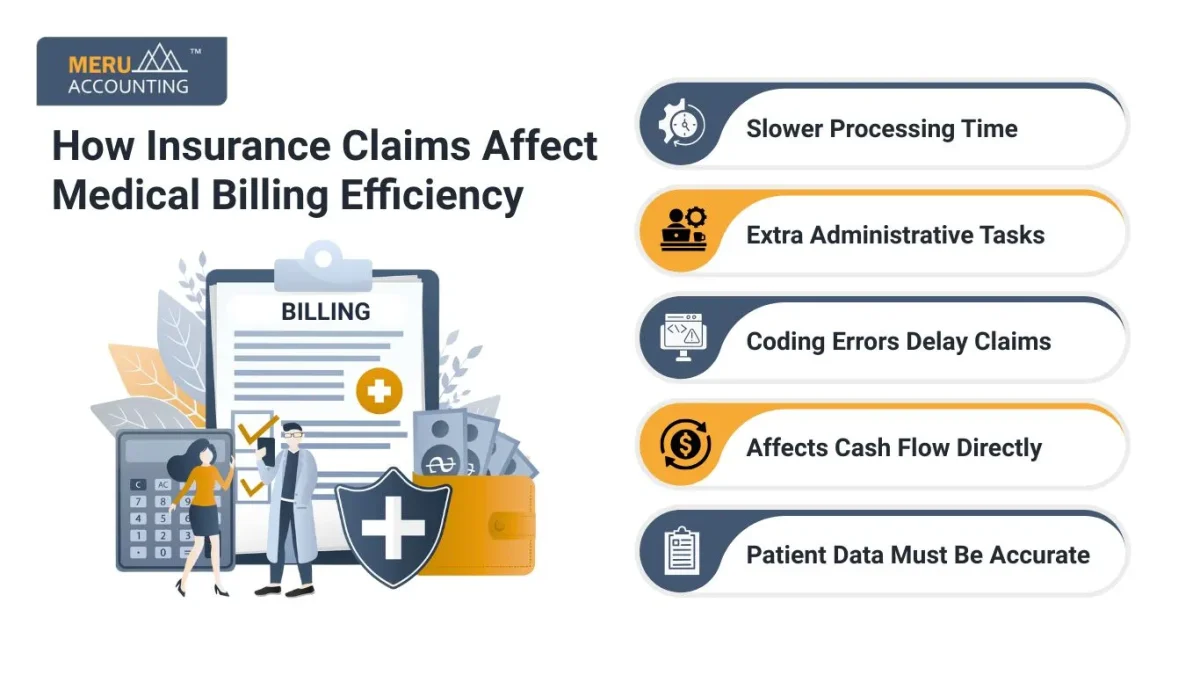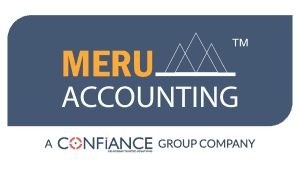How Insurance Claims Affect Medical Billing Procedures’ Efficiency
Medical billing is a key part of healthcare. It helps clinics and hospitals track income by making sure bills are sent on time and are correct. A major factor that shapes this process is how insurance claims are handled. Claim approval or denial affects both billing speed and the cash flow of a practice.
Today, insurance plays a role in most healthcare bills. If claims are late or wrong, billing slows down and costs rise. This blog will show how claims affect billing and how providers can make their systems work better.
Strong billing systems save time and cut errors. Clear records help claims move fast. Staff training also plays a big role in smooth billing. With the right tools and steps, providers can get paid on time and keep their cash flow strong.
What are Medical Billing Procedures?
- Medical billing procedures refer to the steps followed to collect payment for healthcare services.
- It includes coding, submitting claims, posting payments, and handling follow-ups.
Part of Revenue Cycle
- Billing procedures are part of the larger healthcare revenue cycle.
- This cycle starts from patient registration and ends at payment collection.
Multiple Stages Involved
- The process includes data entry, coding, claim creation, and submission.
- Each step must be accurate to avoid errors or delays.
Requires Coordination
- Billing involves both front-end and back-end staff working together.
- Smooth coordination increases the efficiency of the overall system.
What are Insurance Claims?
Basic Definition
- An insurance claim is a formal request made by a provider to an insurance company.
- It asks for payment based on services delivered to a patient.
Contains Medical and Billing Data
- Claims include codes for procedures, diagnoses, and patient data.
- The information must match what is in the patient’s medical record.
Subject to Review
- The insurance company reviews the claim before approving it.
- Mistakes or mismatches may lead to denial or rejection.
Can Be Denied or Approved
- Approved claims lead to payments; denied claims require rework.
- Reworking claims slows down the overall billing process.
How Insurance Claims Affect Medical Billing Efficiency
Slower Processing Time
- Incorrect or delayed insurance claims cause the medical billing procedures to slow down.
- This impacts how quickly providers receive payments from insurers.
Extra Administrative Tasks
- Staff must correct and resubmit denied or rejected claims.
- This leads to more work and higher operating costs.
Coding Errors Delay Claims
- Medical billing depends heavily on accurate codes for services.
- Wrong codes trigger denials and resubmissions, wasting time.

Affects Cash Flow Directly
- Timely insurance claims result in faster payments and make medical billing procedures more efficient.
- Denied claims delay revenue and affect financial planning.
Patient Data Must Be Accurate
- Claims rely on correct patient names, ID numbers, and insurance details.
- Any mistake in the initial data affects claim acceptance.
Steps in Medical Billing & Claim Process
Step 1: Patient Registration
Take patient info and insurance details at the front desk. Correct data here avoids claim issues later. Clear records at this stage save time later.
Step 2: Insurance Check
Confirm if the plan is valid and what it covers. This helps stop denials for non-covered care. It also gives patients a clear view of costs.
Step 3: Medical Coding
Turn care and diagnosis into standard codes. Codes must follow rules so insurance claims are accepted and medical billing procedures stay accurate. Effective coding reduces billing mistakes.
Step 4: Charge Entry
Add costs for each service based on the codes. Charges should match the plan to avoid denial. Accurate entry builds trust in the system.
Step 5: Claim Send
Send the claim to the insurer online or on paper. Use tools to speed the process and cut errors. Fast claim send helps cash flow stay smooth.
Step 6: Claim Review
The insurer checks the claim and makes a choice. They may pay, pay less, deny, or reject. Quick review means faster payments.
Step 7: Payment Post
Add payments to the patient’s account once paid. Any balance left goes to the patient or is waived. This step keeps all records clear and current.
Step 8: Follow-up & Appeal
Fix and resend denied claims or file appeals. Quick follow-up helps recover cash and cut delays. Strong follow-up lowers revenue loss.
A clear claim process saves time and boosts cash flow. Strong systems help providers get paid with less stress.
Common Reasons for Claim Denials
Incorrect Patient Information
- Errors in name, ID number, or birth date lead to denials.
- Even small mistakes cause big billing delays.
Wrong Medical Codes
- Using incorrect procedure or diagnosis codes affects claims.
- Insurance companies reject these insurance claims without payment, which disrupts medical billing procedures.
Missing Documentation
- Claims need supporting records like doctors’ notes or test results.
- Lack of documentation causes automatic rejections.
Duplicate Claims
- Submitting the same claim twice can lead to confusion and rejection.
- Proper tracking avoids these mistakes.
Late Submissions
- Insurance companies have time limits for claim submissions.
- Late claims are often denied without review.
How to Improve Billing Efficiency
Keep Clear Documentation
- Ensure all services are well-documented with proper details.
- Accurate documentation helps coding and billing teams work faster.
Train Staff Regularly
- Provide regular training on new codes and billing rules.
- Skilled staff reduce billing errors and improve productivity.
Use Billing Automation Tools
- Software can automate charge entry, coding, and claim submission.
- Automation reduces human errors and saves time.
Pre-Check Claims
- Review insurance claims for accuracy before submission to payers to keep medical billing procedures smooth.
- Early checks reduce the chance of denials.
Stay Updated with Payer Policies
- Insurance rules change frequently and vary by payer.
- Knowing these rules helps in proper claim filing.
Monitor Denials and Fix Trends
- Track denial reasons and fix common issues at the root.
- Prevent recurring problems to increase approval rates.
Communicate with Insurers
- Build good relationships with payer reps for faster issue resolution.
- Quick communication helps resolve claim questions early.
Role of Technology in Medical Billing
Electronic Health Records (EHR)
- EHRs store accurate patient data used in billing.
- They support smooth data transfer to billing systems.
Medical Billing Software
- Billing software tracks claims, flags errors, and sends reminders.
- These tools reduce manual work and increase claim success.
Electronic Claim Filing
- Claims filed electronically are processed faster than paper ones.
- E-claims reduce mailing time and data entry errors.
Reporting Tools and Dashboards
- Reports show patterns in denials, delays, and approvals.
- Insights from data help improve performance over time.
Challenges in Insurance Claim Management
Frequent Policy Changes
Rules change often, making claims hard to handle.
Staff must stay updated to file claims right.
High Number of Rejections
Rejected claims take time and work to fix.
This causes delays and extra admin work.
Lack of Skilled Staff
Untrained staff make coding and billing errors.
Skilled staff handle tough claims better.
Manual Data Entry Problems
Typing errors in code or details are common.
Automation can cut down these mistakes.
Slow Communication
Waiting for insurers slows the process.
Fast support helps solve claim issues quickly.
Benefits of Efficient Claim Handling
Fast Payments
- Clean and quick insurance claims result in timely payments and support efficient medical billing procedures.
- This keeps the revenue cycle smooth and stable.
Fewer Denials
- Accurate claims reduce the number of denials.
- This cuts down on the time spent fixing claims.
Better Patient Experience
- Faster billing and fewer errors make patients happy.
- Transparency builds trust and loyalty.
Stronger Financial Performance
- More claims approved means higher income for providers.
- Fewer issues lead to better cash flow management.
Reduced Admin Burden
- Efficient processes save staff time and effort.
- Teams can focus on other important tasks.
Best Practices for Clean Medical Billing
Check Patient Info
Always confirm ID, plan, and contact details carefully. Correct data helps avoid billing mistakes and confusion.
Send Claims Fast
File all claims quickly to prevent long payment delays. Fast filing often brings quicker and smoother approvals.
Talk with Patients
Explain what insurance pays for and what it must cover. Clear talks help reduce billing shocks and patient stress.
Keep Learning
Train the billing staff often about rules and process changes. Updated knowledge makes the team faster and more accurate.
Use Smart Tools
Choose billing apps that track, post, and flag errors. Smart tools help cut mistakes and save valuable time.
Real-Life Case Example
- A mid-size clinic faced 40% denial rates in insurance claims.
- They adopted billing software and trained staff in coding.
- Within 3 months, denial rates dropped to 15%, and revenue increased.
- This change reduced workload and improved the billing cycle.
Medical billing works best with clean insurance claims. Claims must be quick, correct, and backed with proof. Delays or errors raise costs and waste time. Tools, staff training, and clear steps can speed things up. Fast, clean claims help boost income for healthcare providers.
Meru Accounting is a trusted partner for healthcare billing. We help clinics, hospitals, and doctors run smooth billing systems. Our skilled team files claims correctly and cuts denials. With smart tools and proven methods, we make billing simple. Working with Meru Accounting can lift cash flow and make revenue cycles easy.
FAQs
Q1. What is the first step in medical billing?
It starts with collecting patient and insurance information.
Q2. Why do claims get denied often?
They are denied due to errors in the codes or patient information.
Q3. Can software help with medical billing?
Yes, it reduces errors and speeds up the claim process.
Q4. What if a claim is denied?
You can correct and resubmit or file an appeal.
Q5. How long does claim processing take?
It varies, but it is faster with electronic submissions.
Q6. How often should billing staff be trained?
Training every few months helps reduce coding errors.
Q7. What is a clean claim submission?
A clean claim has no errors and gets paid quickly.








